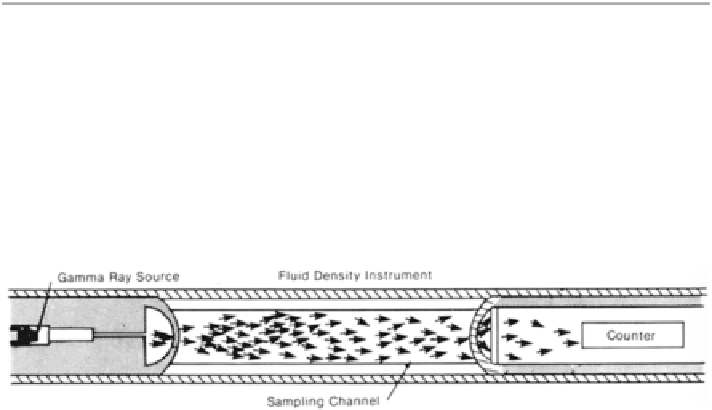Environmental Engineering Reference
In-Depth Information
Question # 7.1
Inspect the log shown in Fig.
7.4
and deduce the fluid(s) produced from each set of
perforations.
If a bubble-flow regime exists in the wellbore, the interpretation of measured
fluid density must take into account the holdup of the flowing mixture. In general,
we may always write:
(
)
rrr
mix
=
y
+
1-
y
,
hh l
h
where
h
denotes the heavier phase and
l
the lighter one, and
y
is the holdup. It fol-
lows, therefore, that if the densities of the light and heavy phases are known, the
holdup may be deduced by:
rr
rr
-
-
y
h
=
mix
l
h
l
The holdup, once determined in this manner, may be used in conjunction with the
holdup equation (derived in Chap.
4
) to deduce the flow rates of both the light and
heavy phases.
Fluid Density Tool (Gamma Ray Absorption)
The fluid density tool operates on much the same principle as the formation density
tools (i.e., a source of gamma rays is positioned with respect to a detector of gamma
rays so that the wellbore fluid acts as an absorber). Figure
7.5
illustrates the operat-
ing principle. A high count rate indicates a fluid of low density and a low count rate
indicates a fluid of high density. Figure
7.6
shows a fluid density log.
Fig. 7.5
The fluid density tool. Courtesy Baker Atlas

Search WWH ::

Custom Search